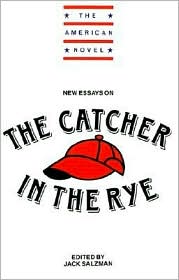MLA Citation:
Salzman, Jack. New Essays on The Catcher in the Rye. Cambridge: Cambridge UP, 1991. Print.
First Paragraph:
“In 1959, eight years after the publication of The Catcher in the Rye, Arthur Mizener began a Harper’s magazine essay about J. D. Salinger by noting that he was ‘probably the most avidly read author of any serious pretensions of his generation.’ There were good reasons why this should be the case, Mizener commented. Whatever limitations the work might have had – either of technique or of subject matter – within these limitations it was ‘the most interesting fiction that has come along for some time.’ Although, as we will see, there was little critical agreement about what the limitations of The Catcher in the Rye may have been, there was little disagreement with Mizener’s contention that Salinger was the most avidly read ‘serious’ writer of his generation. Soon after Nine Stories appeared in April 1953, it made the New York Times best-seller list. By 1961 sales of Catcher were reported to have reached one and half million copies in the United States alone.” (from The Introduction)
Table of Contents:
Series Editor’s Preface
This book is part of The American Novel Series
Introduction by Jack Salzman
Articles
John Seelye: Holden in the Museum
Michael Cowan: Holden’s Museum Pieces: Narrator and Nominal Audience in The Catcher in the Rye
Christopher Brookeman: Pencey Preppy: Cultural Codes in The Catcher in the Rye
Joyce Rowe: Holden Caulfield and American Protest
Peter Shaw: Love and Death in The Catcher in the Rye
Notes on Contributors
Selected Bibliography

